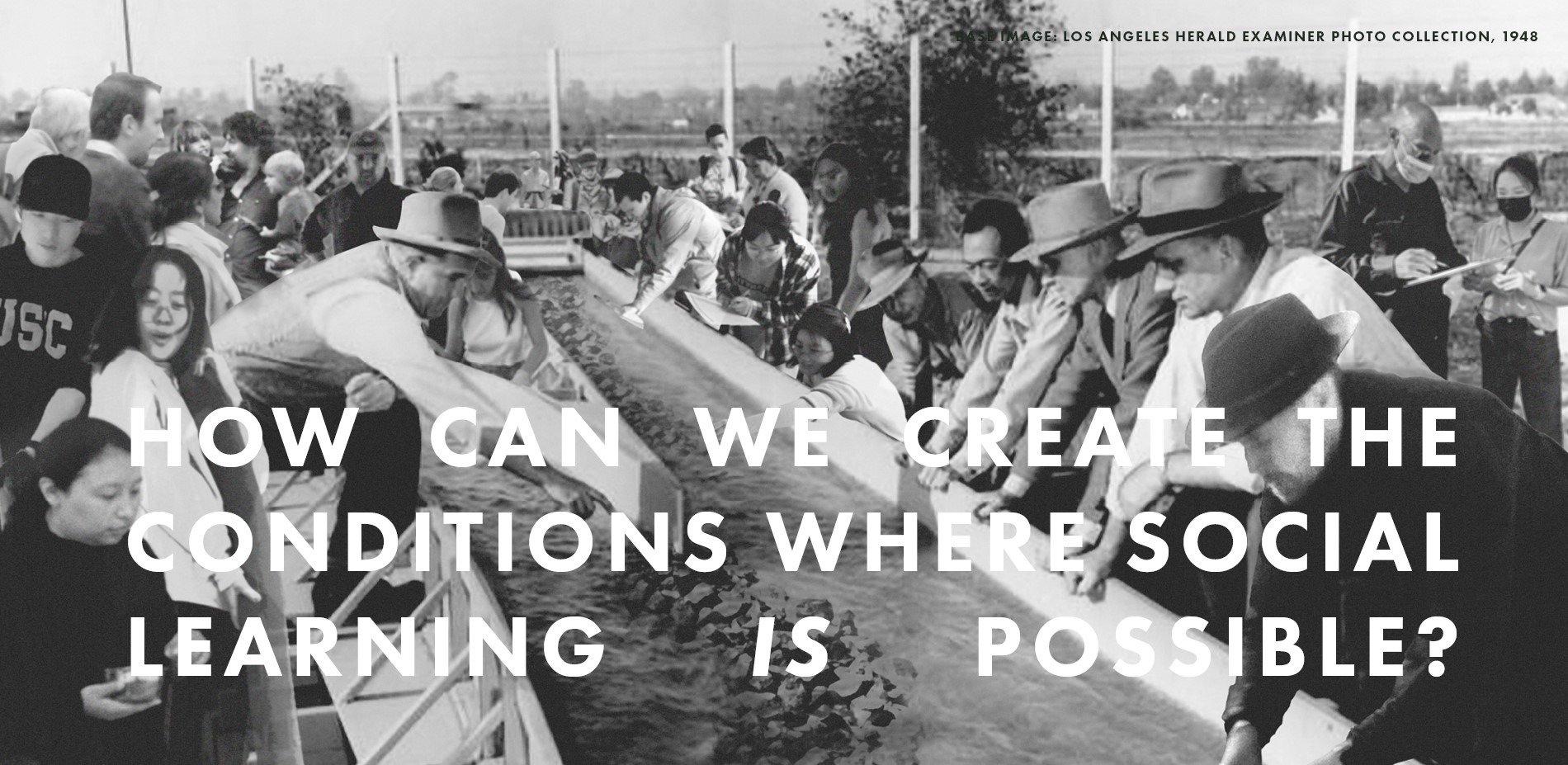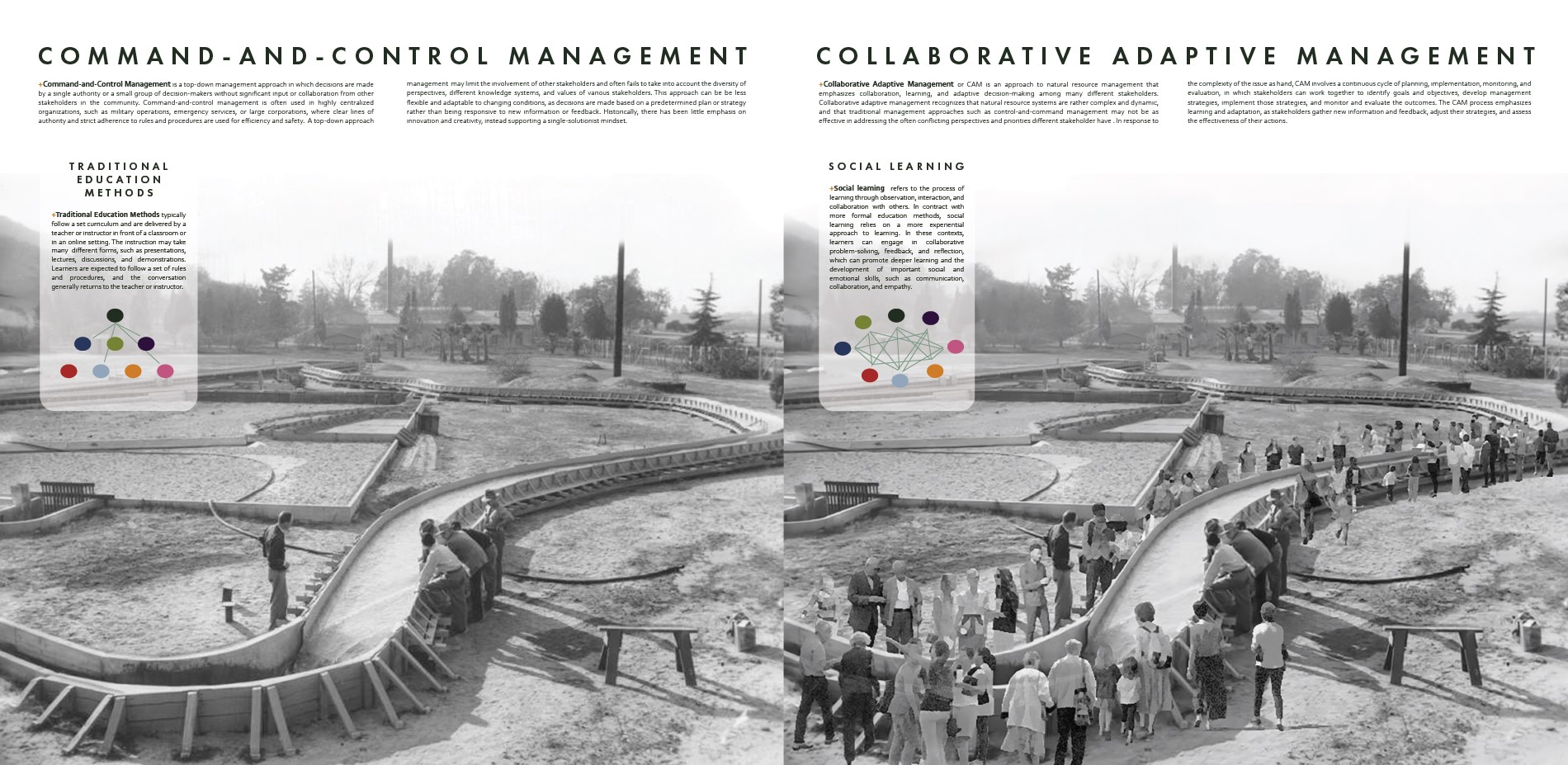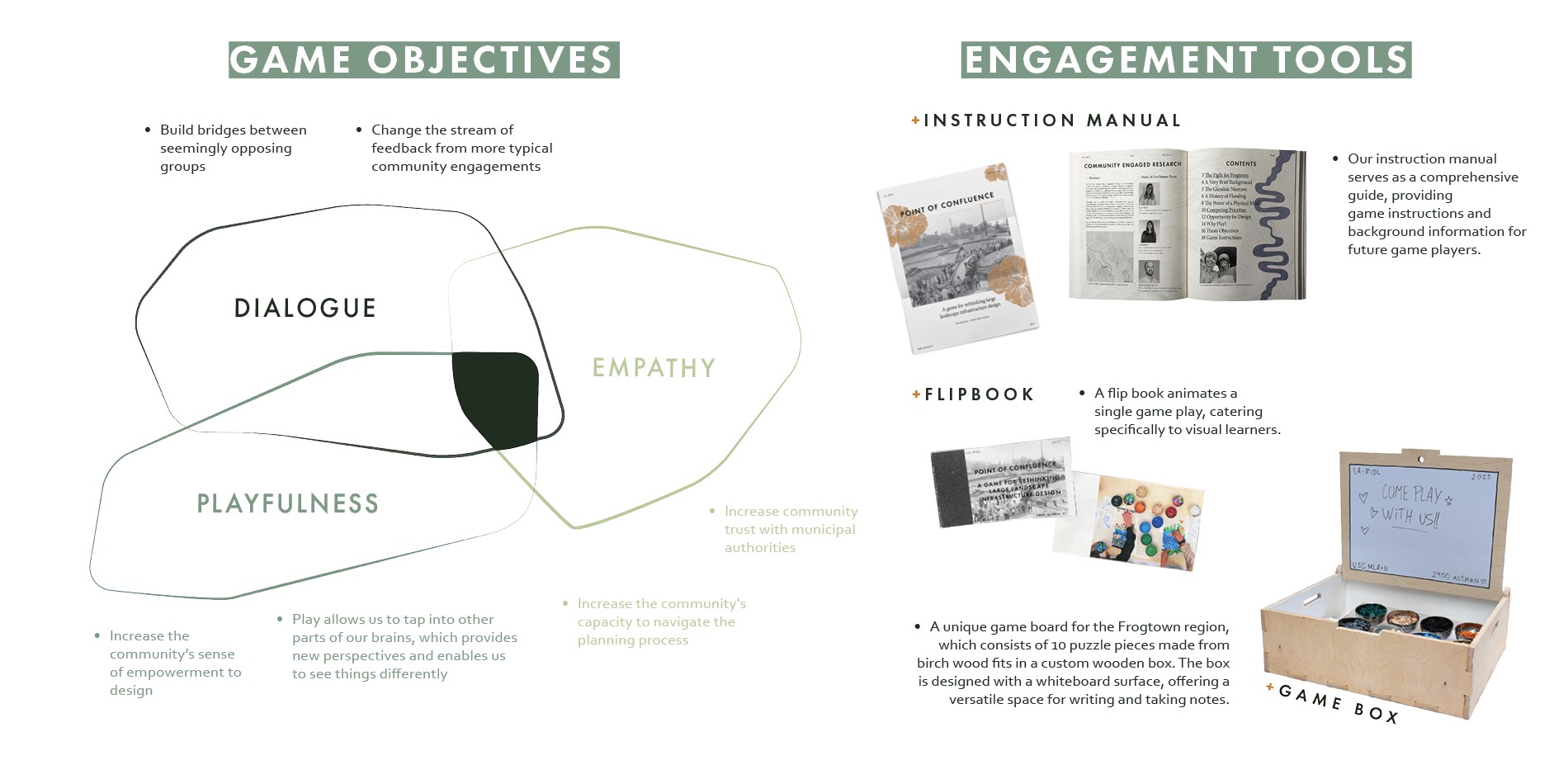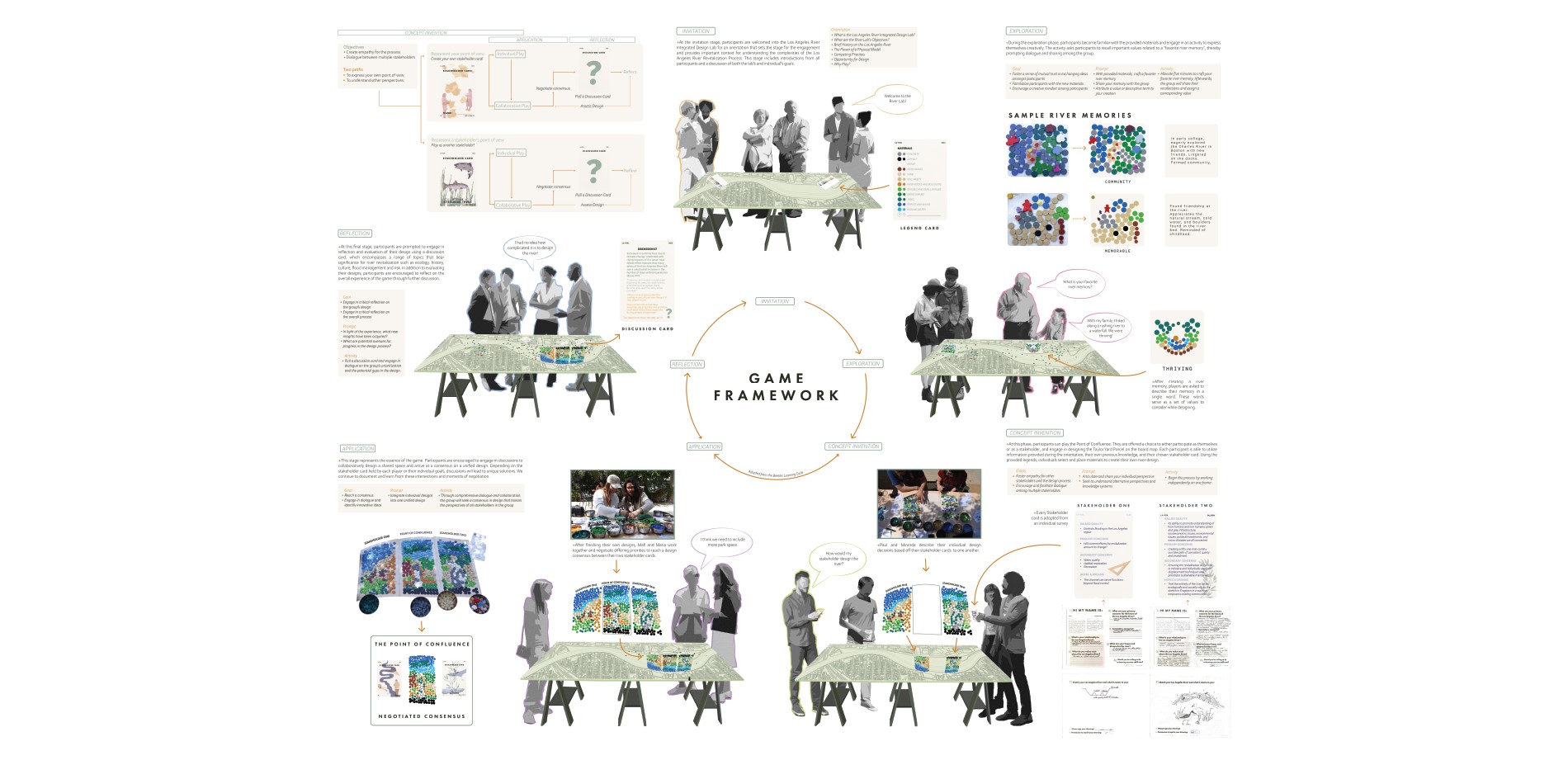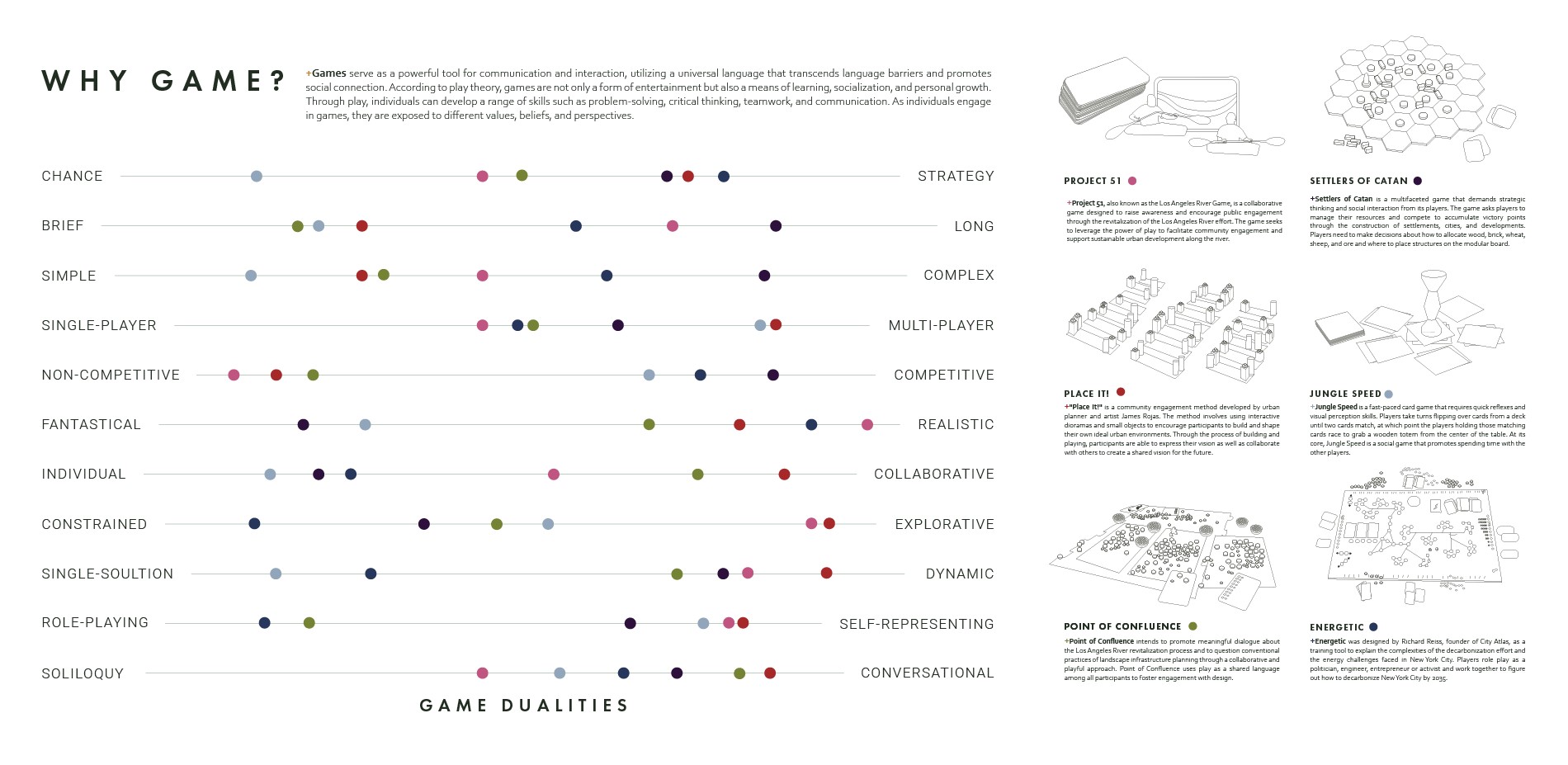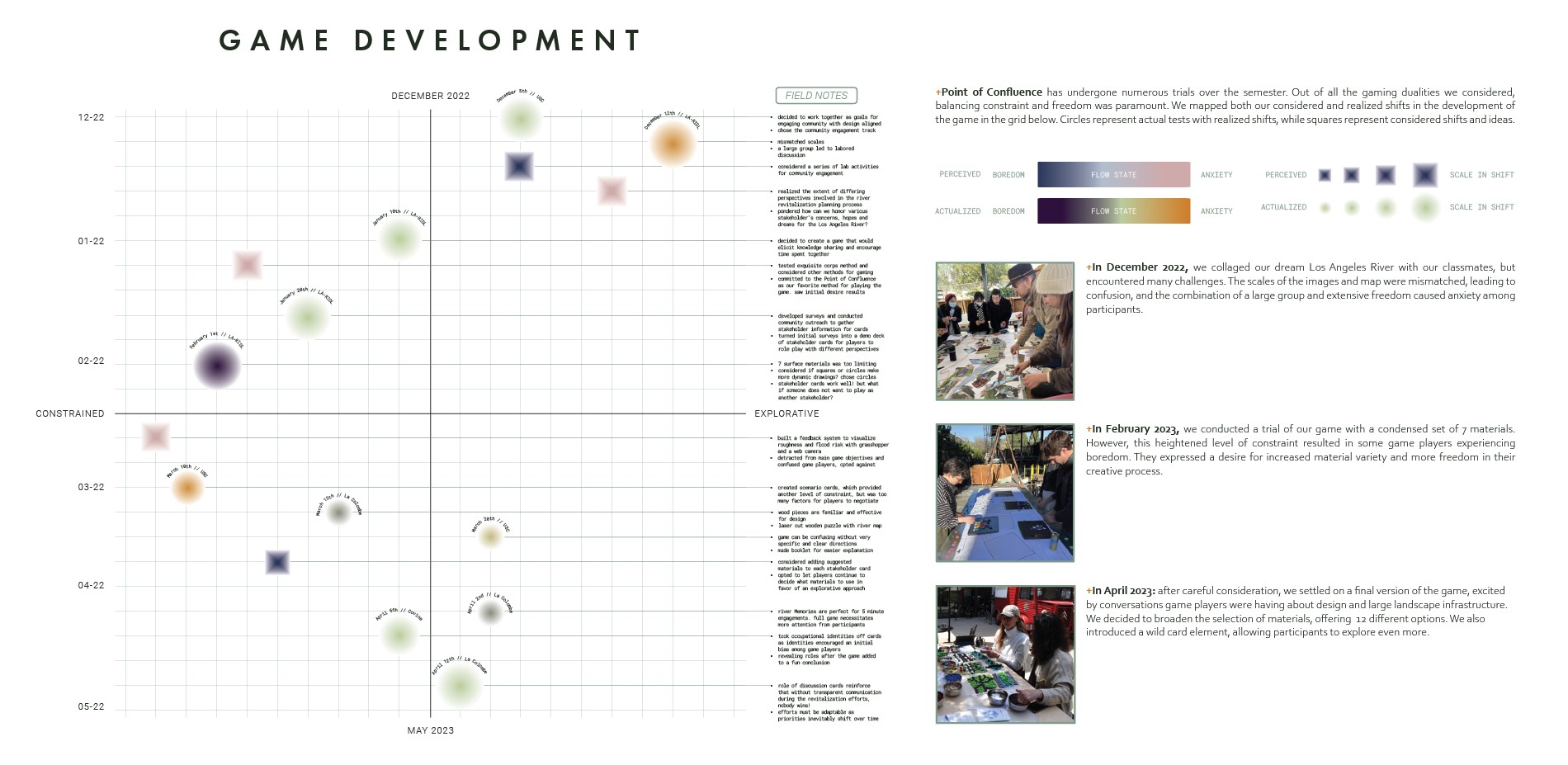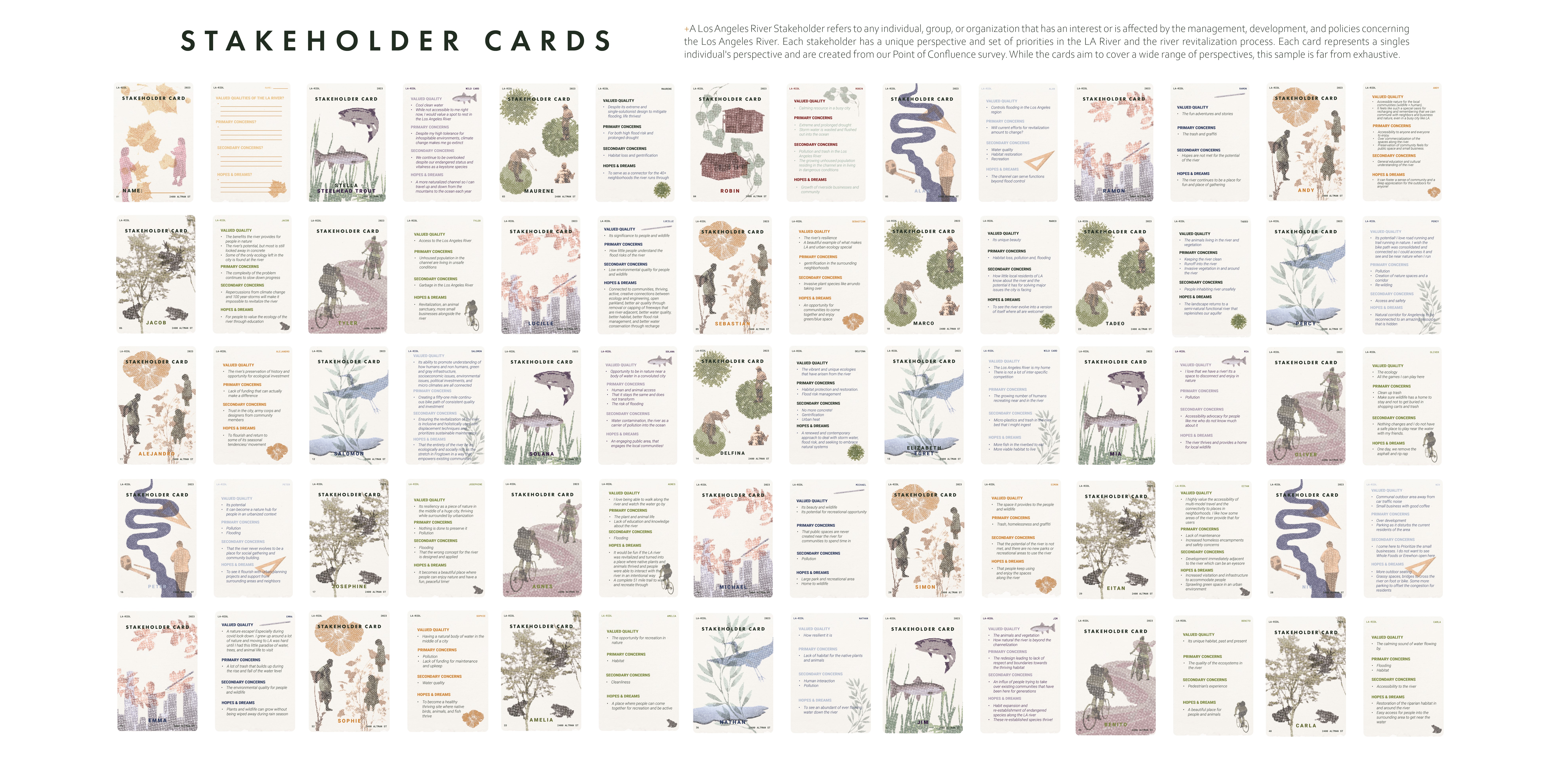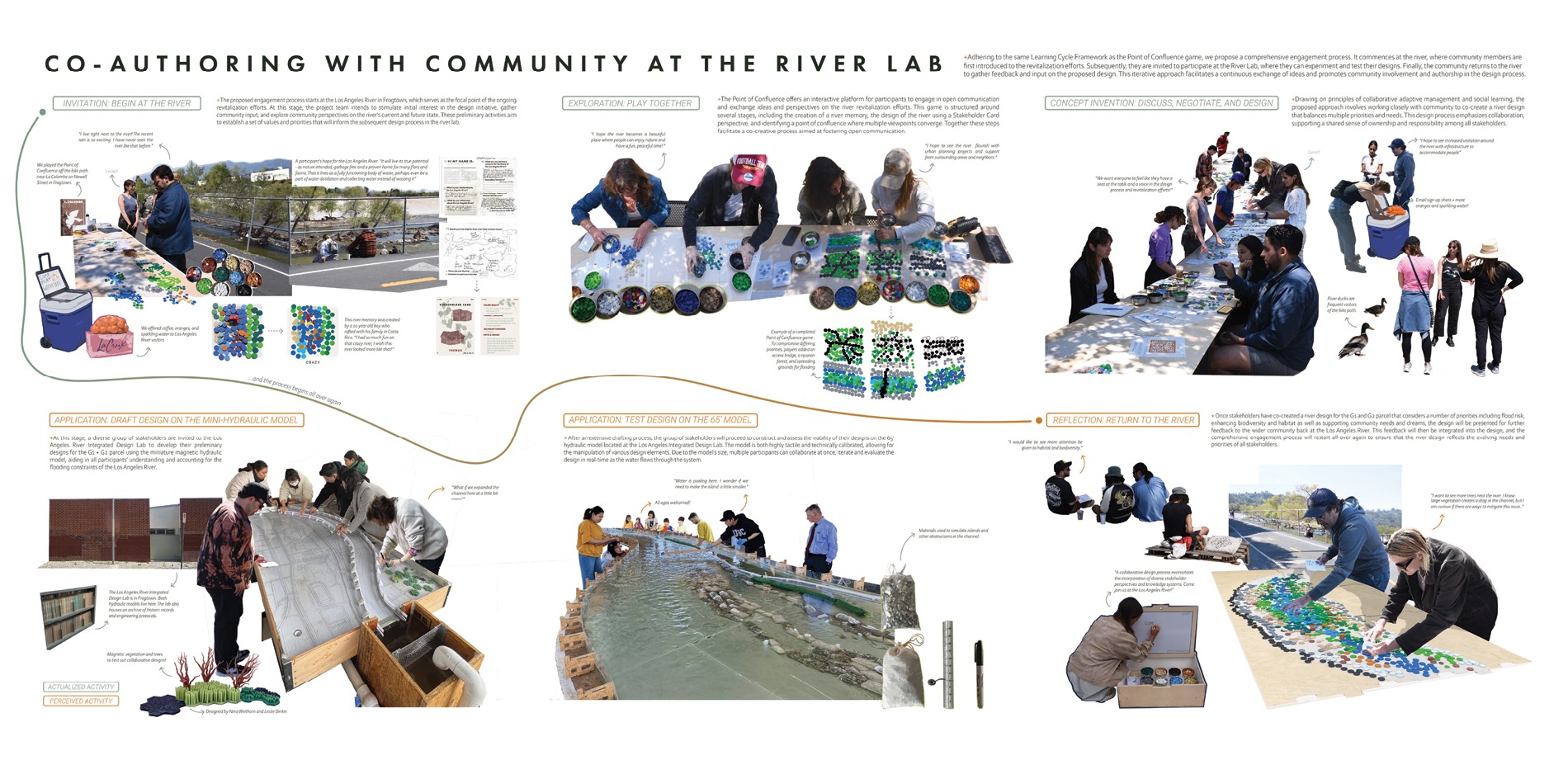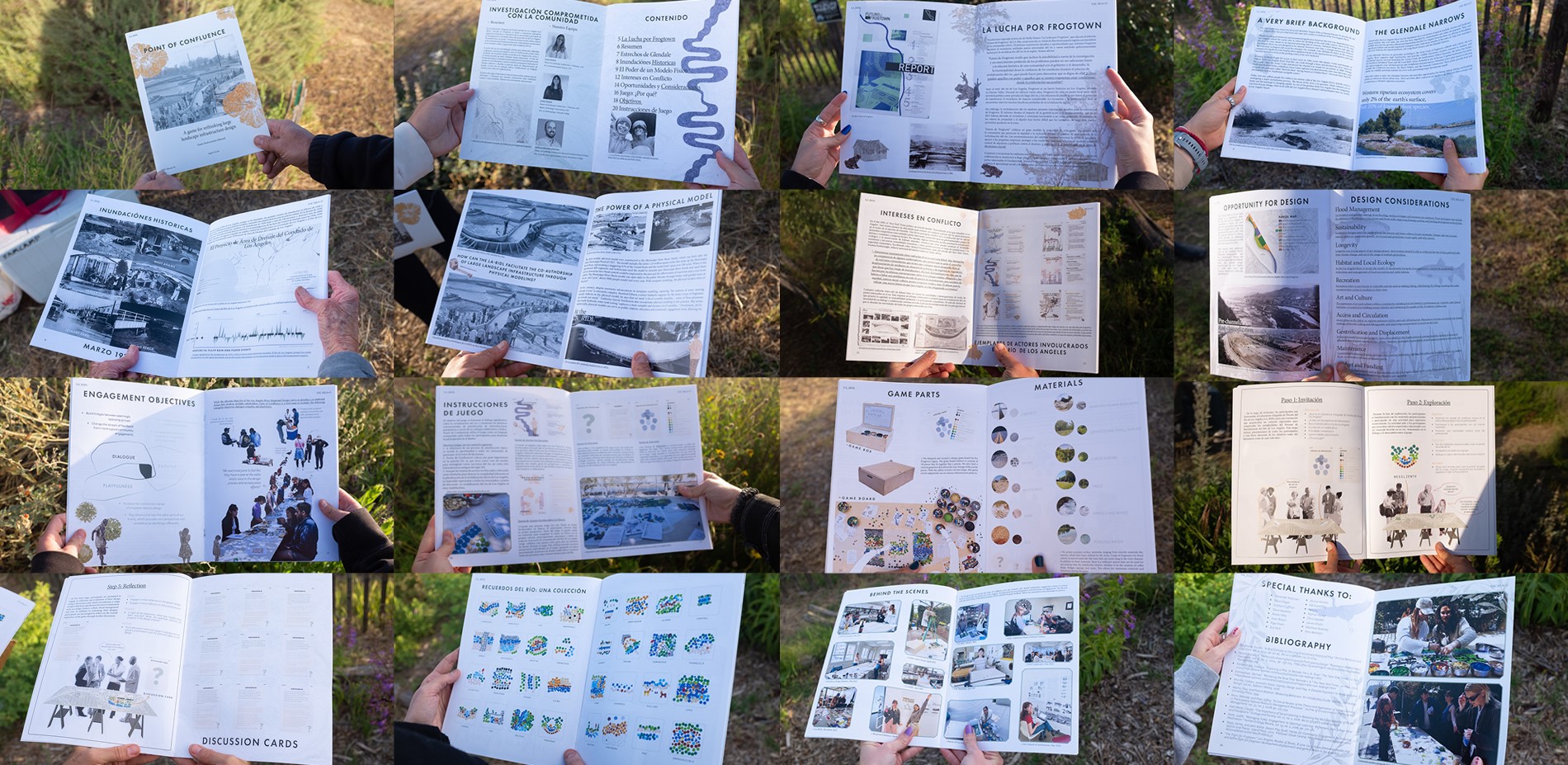Point of Confluence: Re-thinking Large Landscape Infrastructure Design
Honor Award
Communications
Los Angeles, California, United States
Leslie Dinkin, Student ASLA;
Lucia Bayley, Associate ASLA;
Faculty Advisors:
Alexander Robinson;
University of Southern California
This game - and the entire process - is a fun, innovative way to engage an audience, community, and stakeholders. The project synthesizes many different participatory methods and results in a novel approach.
- 2023 Awards Jury
Project Credits
Steve Dwyer
Advisor, United States Army Corps of Engineers
Rosten Woo
Advisor
Isaac Brown
Advisor
Jessica Henson
Advisor, OLIN
Lauren Elachi
Advisor, KDI
Project Statement
Equipped with unique knowledge systems, landscape architects, engineers, and community stakeholders each have a role in considering the future of the Los Angeles River. The Point of Confluence, a game for rethinking how large landscape infrastructure is designed, encourages different stakeholders to speak and play with one another. Rebuilding trust between a municipality and its residents is a long-term process; transparent communication is paramount. Recommendations for the revitalization effort from local reports include engaging the community in crucial decision-making. Silos in landscape infrastructure design create winners and losers, neglecting collective priorities. Collaboration is essential for inclusive and equitable outcomes.
Project Narrative
The Point of Confluence: A Game for Rethinking Large Landscape Infrastructure Design seeks to facilitate dialogue, rebuild trust, and challenge conventional practices in landscape infrastructure through a collaborative and playful approach. Inspired by Molly Strauss's article "The Fight for Frogtown," which highlights LA-Más' “Futuro de Frogtown” report, the game responds to issues of trust between the municipality and Frogtown residents. In the game, players assume the roles of different stakeholders, designing sections of the river to find a consensus or point of confluence that reconciles differing perspectives.
The project centers around the Los Angeles River, a vital resource for the region for thousands of years, known as Paayme Paxaayt to the local Gabrieliño-Tongva Tribe. Despite its historical and ecological significance, however, the river's current state reflects the consequences of multiple major flood events in the late 1930s, which led to its extensive channelization. This single-solutionist design falls under command-and-control management, with decisions made by a single authority without significant input or collaboration from other stakeholders in the community.
Recognizing the complexity of natural resources, our project embraces adaptive management, emphasizing collaboration, learning, and adaptive decision-making among multiple stakeholders. Through social learning processes– learning through observation and interaction– stakeholders can engage in collaborative problem-solving, feedback, and group reflection, providing space for the sharing as well as the hearing of other people’s perspectives. Our project investigates the conditions needed for social learning.
Play serves as a powerful tool for engaging diverse perspectives and generating new ideas. The Point of Confluence game creates a common language, fostering collaboration between engineers, landscape architects, and community members alike. Randy Hester's concept of participatory design inspired us to explore processes of building empathy, mutual understanding, and effective communication in order to eventually co-author designs. Developed as a tool for translation, the Point of Confluence serves as an initial step for inclusive long term planning for the Los Angeles River.
To build the game, we created a custom puzzle board for the Frogtown region, a puzzle box, an instruction manual, colorful wooden pieces, legend cards, discussion cards, and stakeholder cards. To capture a wide range of stakeholder perspectives, we surveyed landscape architects, hydraulic engineers, tribal botanists, ecologists, residents, design students and other experts, each representing unique hopes, concerns, and considerations for the river. Within the game framework, participants engage in play, design, reflection, and evaluation, using discussion cards to explore topics such as ecology, heritage, and flood management. Through the entire process, players gain insights into the complexities of large-scale landscape infrastructure projects and grapple with priorities that might differ from their own.
In total, we spent over 40 hours playing the game all over Los Angeles. Through iterative testing and feedback, we refined the game and its components to best emphasize the need for compromise and collaboration to achieve collective success during the river revitalization process. Our game methods are also intentionally versatile and customizable to suit other design project needs.
